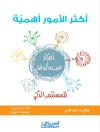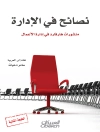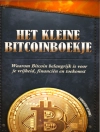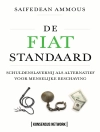New York City boasts a higher rate of unionization than any other major U.S. city—roughly double the national average—but the city’s unions have suffered steady and relentless decline, especially in the private sector. With higher levels of income inequality than any other large city in the nation, New York today is home to a large and growing ‘precariat’: workers with little or no employment security who are often excluded from the basic legal protections that unions struggled for and won in the twentieth century.Community-based organizations and worker centers have developed the most promising approach to organizing the new precariat and to addressing the crisis facing the labor movement. Home to some of the nation’s very first worker centers, New York City today has the single largest concentration of these organizations in the United States, yet until now no one has documented their efforts.New Labor in New York includes thirteen fine-grained case studies of recent campaigns by worker centers and unions, each of which is based on original research and participant observation. Some of the campaigns documented here involve taxi drivers, street vendors, and domestic workers, as well as middle-strata freelancers, all of whom are excluded from basic employment laws. Other cases focus on supermarket, retail, and restaurant workers, who are nominally covered by such laws but who often experience wage theft and other legal violations; still other campaigns are not restricted to a single occupation or industry. This book offers a richly detailed portrait of the new labor movement in New York City, as well as several recent efforts to expand that movement from the local to the national scale. Contributors: Benjamin Becker, CUNY Graduate Center; Marnie Brady, CUNY Graduate Center; Jeffrey D. Broxmeyer; CUNY Graduate Center; Kathleen Dunn; Loyola University; United Food and Commercial Workers Local 2013; Harmony Goldberg; CUNY Graduate Center; Peter Ikeler, SUNY College at Old Westbury; Martha W. King, CUNY Graduate Center; Jane Mc Alevey, CUNY Graduate Center; CUNY Graduate Center; Susan Mc Quade, CUNY Graduate Center and New York Committee for Occupational Safety and Health; Erin Michaels, CUNY Graduate Center; Ruth Milkman, CUNY Graduate Center and Joseph S. Murphy Institute for Worker Education and Labor Studies, CUNY School of Professional Studies; Ed Ott, Murphy Institute, CUNY School of Professional Studies; Ben Shapiro, New York Communities for Change; Lynne Turner, Murphy Institute, CUNY School of Professional Studies.
Cuprins
Introduction. Toward a New Labor Movement?: New York City’s Precariat
Ruth Milkman Part I. IMMIGRANT UNION ORGANIZING AND UNION-COMMUNITY PARTNERSHIPS 1. Taking Aim at Target: West Indian Immigrant Workers Confront the Difficulties of Big-Box Organizing
Ben Becker2. Organizing Immigrant Supermarket Workers in Brooklyn: A Union-Community Partnership
Ben Shapiro3. Faith, Community, and Labor: Challenges and Opportunities in the New York City Living Wage Campaign
Jeff Broxmeyer and Erin Michaels4. UNITED New York: Fighting for a Fair Economy in ‘The Year of the Protester’
Lynne Turner Part II. ORGANIZING THE PRECARIAT, OLD AND NEW 5. Infusing Craft Identity into a Noncraft Industry: The Retail Action Project
Peter Ikeler6. Street Vendors in and against the Global City: VAMOS Unidos
Kathleen Dunn7. Protecting and Representing Workers in the New Gig Economy: The Case of the Freelancers Union
Martha King Part III. IMMIGRANT STRUGGLES FOR JUSTICE IN AND BEYOND THE WORKPLACE 8. The High-Touch Model: Make the Road New York’s Participatory Approach to Immigrant Organizing
Jane Mc Alevey9. Bridging City Trenches: The New York Civic Participation Project
Steve Mc Farland10. Creating ‘Open Space’ to Promote Social Justice: The Min Kwon Center for Community Action
Susan Mc Quade Part IV. GOING NATIONAL: NEW YORK’S WORKER CENTERS EXPAND 11. An Appetite for Justice: The Restaurant Opportunities Center of New York
Marnie Brady12. Not Waiting for Permission: The New York Taxi Workers Alliance and Twenty-First-Century Bargaining
Mischa Gaus13. ‘Prepare to Win’: Domestic Workers United’s Strategic Transition following Passage of the New York Domestic Workers Bill of Rights
Harmony GoldbergAfterword: Lessons from the New Labor Movement for the Old
Ed Ott
Despre autor
Ruth Milkman is Professor of Sociology at the CUNY Graduate Center and Academic Director of CUNY’s Murphy Labor Institute. She is the author of several books, including the prizewinning Gender at Work and L.A. Story: Immigrant Workers and the Future of the U.S. Labor Movement. She also is coauthor of Unfinished Business: Paid Family Leave in California and the Future of U.S. Work-Family Policy, editor of Organizing Immigrants, and coeditor of Rebuilding Labor and Working for Justice, all from Cornell. Ed Ott is Distinguished Lecturer at CUNY’s Murphy Labor Institute. He spent over forty years in the labor movement, most recently as Executive Director of the New York City Central Labor Council.












